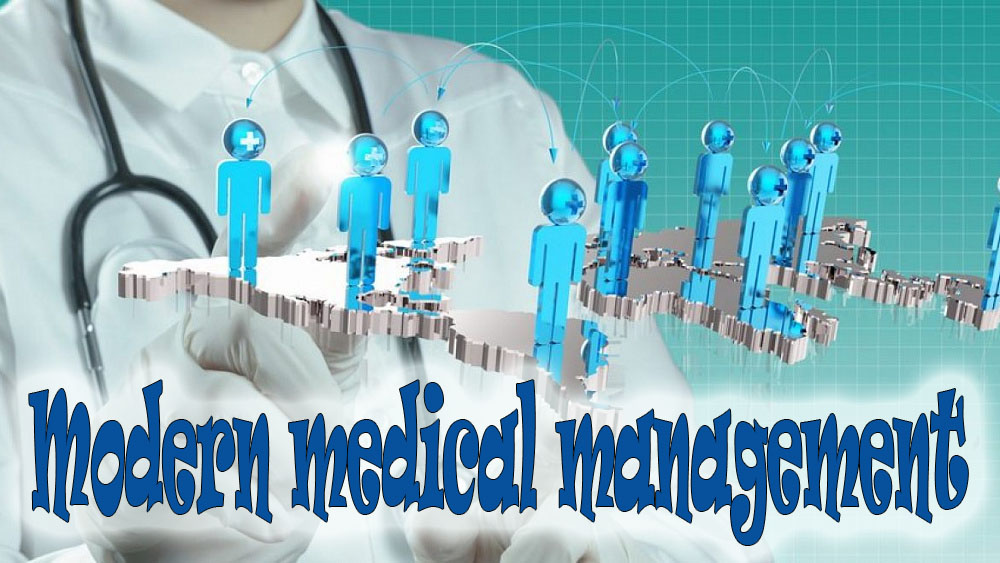
Dr Peter Bertagnoll (PhD) Business Admiration in Health Care Systems (USA)
Keywords: strategic planning, SWOT analysis, PEST analysis, organisational environment, threats, opportunities, medical management, ecological production, green agenda.
The main objective of medical administration (management) is to create a rational public health service with high efficiency.
The tasks of medical administration are: to study and evaluate the health of the population, the dynamics of its development; to study and evaluate the factors affecting health; to develop methods and ways to promote health, prevent diseases and disabilities, as well as their rehabilitation; to evaluate the quality and efficiency of health care; to solve the problems of management, financing and economics of health care; legal regulation of health care; to form a socio-hygienic mentality and thinking of health workers.
Population health, public health care, factors affecting population health and medico-socially significant pathologies are the subjects of medical administration.
The first stage in the modern development of the science of public health (then called “social hygiene”) is considered to be the period from the Renaissance to 1850. During this period, serious research was accumulated on the interdependence of the health of the working population, their living and working conditions. The first systematic guide to social hygiene was Frank’s multi-volume work, written between 1779 and 1819. Doctors in France in 1848 and 1871 tried to scientifically justify public health measures, considering social medicine to be the key to the health of society. Rudolf Virchow, a hygienist from Germany in the same period, emphasised the close relationship between medicine and politics. Neumann, a contemporary of Virchow, introduced the concept of “social medicine” into German literature. In a work published in 1847 he convincingly proved the role of social factors in the development of public health care. At the end of the XIX century the development of the main direction of public health up to our days was determined. This direction links the development of public health with the general progress of scientific hygiene or, with biological-physical hygiene. England in the nineteenth century also had major figures in public health. E. Chadwick saw the main reason for the poor health of the people in their poverty.
For the planned development of the economy of any country, information on the number, age-sex structure of the population, and determination of its forecasts for the future is of great importance. Public health reveals the regularities of population development, studies demographic processes, forecasts the future, develops recommendations for state regulation of population size. Of leading importance in the study of this discipline is the question of the effectiveness of the impact on the health of the population of all the activities that the state carries out, and the role in this health care, individual medical institutions.
Under the conditions of reforms in the health care system, the requirements for health care administrators in terms of their readiness to work in a competitive environment are increasing. In order to work effectively in the health care system, it is necessary to understand and know the structure of the health care system and the levels of health care management, to have an understanding of the basics of economics, marketing and health insurance system, to understand the system of organisation of medical care for the population. Without knowledge and understanding of these issues it is impossible to master a range of competences and become a competitive specialist.
Medical administrator (manager) to preserve, strengthen and restore the health of the population must have an idea of the state of health of the population, be able to calculate health indicators and analyse them, know the factors affecting the state of health and methods of hygienic education and training to eliminate or reduce the impact of these negative factors.
Management (from English menegement – the science of managing people in the process of their labour activity. It is the ability to achieve the goals of the organisation using knowledge, skills and motives of other people. Under the conditions of market economy the relevance of effective management of medical organisation has sharply increased. The specificity of management of medical organisations is conditioned by the fact that healthcare is a special sphere of activity, one of the most important managerial tasks in which is the achievement of the following targets: improving the quality and accessibility of medical care through
effective use of limited financial, material, labour and other resources in conditions of rapidly growing competition in the market of medical services.
Medical management has specific features that require the application of special management technologies. Firstly, the result of a specialist’s activity is a medical service, which implies direct contact with the consumer and his involvement in the process of its provision. Hence the necessity not only to improve communication skills of a medical manager, but also taking into account the fact that patients are one of the main elements of the external environment of direct impact, it is necessary to master the technologies of SWOT-analysis and PEST-analysis
The abbreviation SWOT stands for Strengths; Weaknesses; Opportunities; Threats;
SWOT-analysis is the most common tool for analysing the environment of an enterprise in the process of strategic planning. This type of analysis allows to identify the factors that are most important for the activity of the organisation, to determine threats and opportunities for the analysed enterprise, as well as to develop a strategy for further actions in order to minimise damage from threats and maximise the positive impact of opportunities.
At the same time, through PEST analysis, it is possible not only to present a clear picture of the external environment factors significant for the development of medical business, but also to assume how their implementation may affect the activities of the organisation, as well as to develop plans to prevent the consequences of negative events and minimise damage from them.
The abbreviation PEST is based on different categories of factors, which are deciphered in English as follows: Political; Economic; Social; Technological.
Regular analysis of the situation in the internal and external environment of an organisation is a necessary condition for stable long-term business development and a basis for strategic planning in organisations of any scale and in any sphere of activity. In addition, without forecasting changes in external conditions, there is a high risk of untimely response to them and the occurrence of damage to the company’s future activities.
In addition, the methods used in economic sciences are used to study the impact of socio-economic factors on human health. These methods find direct application in the study and development of such issues of health care as accounting, planning, financing, health care management, rational use of material resources, scientific organisation of labour in health care bodies and institutions.
One clear example of the role of medical administration in the overall system of work is the “symbiosis” of medicine and ecology – medical ecology.
Medical ecology is a comprehensive scientific discipline that addresses all aspects of environmental influences on public health, with a focus on environmental diseases. Medical ecology tries to establish the cause of diseases in direct connection with the environment, while taking into account a wide variety of environmental factors, nosological forms of diseases and human genetic features.
WHO documents repeatedly state that people’s health is a social quality, we are talking about the social conditionality of health, i.e. the primary and sometimes decisive impact of social risk factors on it.
According to WHO, public health should be seen as a resource for national security, a means of enabling people to live well, productive and quality lives. All people should have access to the resources they need to be healthy.
The famous American ecologist Y. Odum in 1963 called ecology a science about the structure and functions of nature as a whole, and in his fundamental “Ecology” (1986) it is interpreted as an interdisciplinary field of knowledge about the structure and functioning of multilevel systems in nature and society in their interrelation.
Throughout the history of civilisation, practically all forms of engineering activity and all technical achievements of man have to a greater or lesser extent had an anti-natural, “nature-conscious” orientation. It is difficult to name any non-egoistic result of human activity favourable for wildlife. Even creating a perfect environment-protecting device, an engineer has to realise that extraction of raw materials, production of materials, parts and energy for it will be accompanied by such consumption of resources and pollution of the environment, which can hardly be completely prevented or at least compensated by its unique design. Emissions from industrial plants, energy systems and transport into the atmosphere, water bodies and subsoil have reached such proportions at the present stage of development that in a number of areas, especially in large industrial centres, pollution levels substantially exceed permissible sanitary standards.
Medical ecology is a science that studies the interaction between the environment and human health. It studies the impact of various environmental factors, such as air, water and soil pollution, on human health and the development of disease.
An environmental health manager seeks to understand what environmental factors may be harmful to health and how to prevent or reduce their negative effects. He or she also studies the relationship between diseases and environmental conditions in order to develop effective disease prevention and control measures.
Medical ecology is an interdisciplinary science that incorporates elements of medicine, ecology, toxicology, geography and other sciences. It uses research methods to assess environmental pollution, study its impact on health, and develop strategies to improve the environment and protect human health.
One of the main objectives of the work of an environmental medical manager is to study the effects of the environment on human health. This involves analysing the impact of various environmental factors such as air, water and soil pollution on diseases and health conditions. The objective is to determine the causes of diseases associated with environmental factors and to develop measures to prevent and control them.
Medical ecology is also concerned with assessing the level of
of environmental pollution by various substances and factors. This involves studying the concentration of toxic substances in air, water, soil and food and assessing their effects on human health. The objective is to identify dangerous levels of pollution and to develop measures to reduce and control environmental pollution.
Development of strategies for prevention and control of diseases associated with environmental factors is an integral part of the work of the medical administrator in ecology. This includes developing recommendations to improve the environmental situation, implementing measures to reduce environmental pollution, educating the population in the basics of environmental hygiene and monitoring morbidity and mortality from environmentally related diseases. The objective is to prevent diseases and improve the health of the population by improving the environmental situation.
The object of the health care system is the human being, who is a unity of the material body and the immaterial, intellectual spirit. The human body proper, being a complex biological substance, has at the same time all the properties of organic substances. In this sense, surgical, chemical, radiation and other similar medical impact on the human body is a change in the composition, form, properties, qualities of the bodily substance with the use of mechanical, thermal, chemical, electrical, ultrasound, plasma, biological technologies, which is characteristic of any material production.
The International Labour Organization (ILO) estimates that occupational diseases and accidents at work claim more than 6,300 lives every day, more than 2 million people die every year, and occupational diseases, without fatal outcome, cause harm to more than 160 million people.
Therefore, the topic of preserving the health of the working population in the country and in the world as a whole is of strategic importance and is a matter of state security.
Industrial health care is basically a section of public health care and is a set of medical and socio-economic measures aimed at improving the health of employees of enterprises, preserving their labour longevity and increasing the reliability of the “human factor” in the production process.
The main tasks of industrial health care are:
– Provision of qualified medical and sanitary assistance to workers to reduce morbidity, disability and
mortality, prevention of occupational diseases, occupational injuries, preservation of working capacity and prolongation of labour longevity of employees;
– ensuring constant readiness to provide medical assistance in case of emergencies and accidents at the enterprises and territories served.
The work of the medical manager in these conditions should be aimed at reducing exacerbations and complications of chronic somatic diseases; reducing the number of neglected cases, including oncopathology and socially significant diseases; reducing cases of temporary disability; detecting pathology, including occupational pathology, at early stages; achieving the economic effect of reducing the cost of benefits for temporary disability.
Industrial medicine is a field of medicine whose primary goal is to identify and treat injuries and illnesses of workers related to their work activities.
The first information about industrial medicine was found in ancient Greece. Ancient Greek scientists analysed morbidity and mortality among miners and revealed the fact of a significant discrepancy in comparison with people of other professions. In 1700, the first book on industrial medicine appeared under the title “Diseases of Workers” by the author Bernardino Ramazzini.
The term “industrial medicine” emerged during the Industrial Revolution, when occupational diseases became much more common due to the development of production and urbanisation. At that time, many people, including children, had to work in unsanitary conditions for ten to eighteen hours a day, which had a negative impact on their health and performance. Under the influence of these factors, many scientists such as Percival and Thakra thoroughly studied the effects of occupational hazards on the human body in order to form effective recommendations for improving labour hygiene in factories and plants.
After 1960, the term “industrial medicine” evolved into the broad “occupational medicine” and was enshrined in legislation, which markedly reinforced its importance to both workers and employers. In the modern world, the obviousness of the fact that the prevention of occupational diseases is much more favourable than their treatment leaves no doubt.
– Personal and collective protective equipment (PPE and PPE);
– replacement of extremely toxic materials with less toxic materials;
– reduction of working hours;
– full briefing of employees on working conditions and precautions;
– monitoring compliance with labour laws.
Currently, this concept includes maintaining the health of workers, protecting them from the effects of harmful factors on the body, and providing people with occupational diseases or working in labour conditions with risks to life and health with the necessary social guarantees.
According to the World Health Organization, occupational medicine aims “to promote and maintain the highest degree of physical, mental and social well-being of workers in all occupations, to prevent workers from suffering from health problems caused by working conditions” and is intended not only to ensure high working capacity, but also to reduce labour losses by improving working, living and recreational conditions and, most importantly, to prevent disease.
Enterprises nowadays are more interested than ever in protecting the health of their employees, as it is important for them to have efficient professionals at their workplaces, in conditions of staff starvation.
In order to prevent a decrease in personnel efficiency, employers organise regular preventive examinations, monitoring and forecasting the occurrence of possible occupational diseases. At the present stage, the subject of industrial medicine is not so much industrial injuries as prevention of dangerous diseases and consequences of sedentary and improper lifestyle.
The corporate philosophy and organisation of industrial production of the company “Elox” GmbH” and IPOH GmbH, Austria – the manufacturer of the innovative mattress pad “IFIBR -FIBRANIUM ” – deserves close attention of competent work of medical management.
Embodying the philosophy of the “green agenda”, the company has organised the production of products that strictly comply with modern environmental standards. The filler used in the manufacture of the IFIBR-FIBRANIUM product is a siliconised fibre, which is comparable to natural down in terms of airiness, comfort and elasticity, but at the same time has excellent hypoallergenic properties.
The technology used in the manufacture of the product “IFIBR -FIBRANIUM ” meets modern environmental requirements and is used to realise the potential of artificially non-reproducible natural minerals.
In addition to the idea of using FIBRANIUM fibres, the development of “IFIBR -FIBRANIUM ” is based on the theory of the therapeutic effect on the human body of groups of natural minerals, i.e. natural chemical compounds and their mechanical mixtures, which have high biogenicity, or the ability to ensure interaction between biosubstrates in the implementation of metabolic reactions at the cellular, organ and system level. Their origin is the Western spurs of the highest mountain systems of the planet Earth, the Himalayas.
Thus, the organisation of production of the innovative product “IFIBR -FIBRANIUM ” not only achieves the goal of presenting a high-tech and environmentally safe product on the market, but also allows to achieve environmental safety of the production process itself, which certainly corresponds to modern trends in the development of environmentally-oriented industries.
Literature:
- Kuznetsov Y.V. Problems of theory and practice of management1994, SPb.
- Kurbataev A. A. ” Managerial accounting in health care institutions”. \\\ Zdravookhranenie. 1996. – № 9. – с, 94.
- A. A. Lebedev, G. V. Karaseva, S. G. Tolstov. G. “About the role of marketing researches in optimisation of self-financing activity of medical and prophylactic institutions”. – 1996. – № 2. – с. 5.
- Lisitsyn Y.P. From social hygiene and social medicine // Problems of social hygiene and history of medicine. -1994. -№ 1. -с.46-50.
- Modelling in health care management: Republican collection of scientific papers edited by Professor GasporianS.A., M., 1960.
- Ovchinnikov G.P. Macroeconomics \SPb. 1993.
- Yakobson L.I. Zdravookhranenie: planning and final results.
- Albert M.,Mescon M.H.,Khedourl F. Management,-New York, 1992.P.700.
- Anthony G. Gorry. ” A Framework for Manadgment Information System”,Sloan Management Reviese, vol. 13, p.57.
- Gish O.-Some links between successfut implementation of primary health care interventions and the overall utilisation of health services// Soc. sei. Med. 1990 -vol.40. N 4. -p.401-405
- Grument G.W. Sounding board: Health care rationing through inconvenience//N.Engl.J.Med. 1969.-vol.321, N 9.-p.607-611.
- Relman A.S. Assessameht and acconutability. The third revolutionin medical care. N.Engl.J.Med.- .988.-vol.419, N 18. -P. 12201222
- Robey I.M.Lee S.N. Развитие информационной системы в поддержку мониторинга и оценки национальной программы здравоохранения: Случай Филиппин//World Health stat.Q- 1990.-vol.43.N 1. -p.37-46
- Роль врача общей практики в 1990-х годах//Med. J Custr.-1989-VOI.151,N 5.-P.242-243


